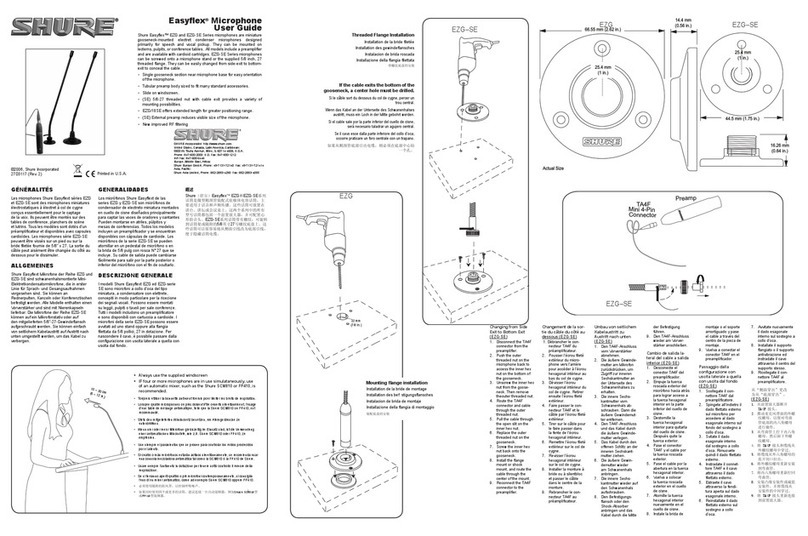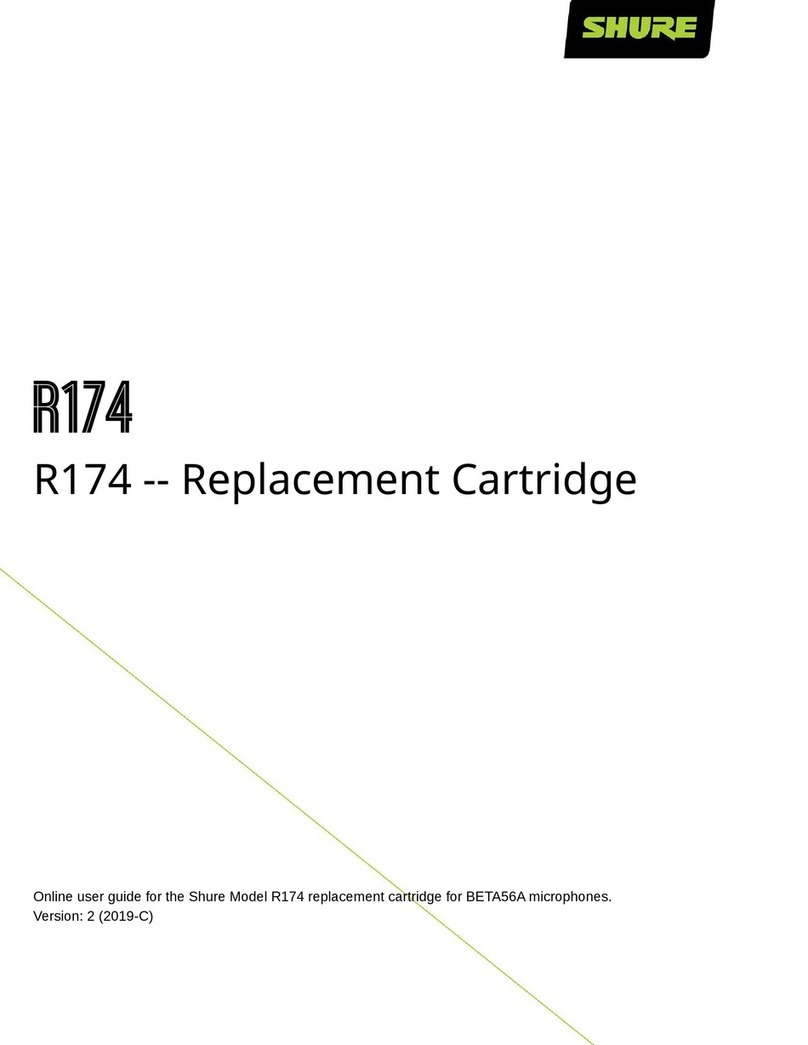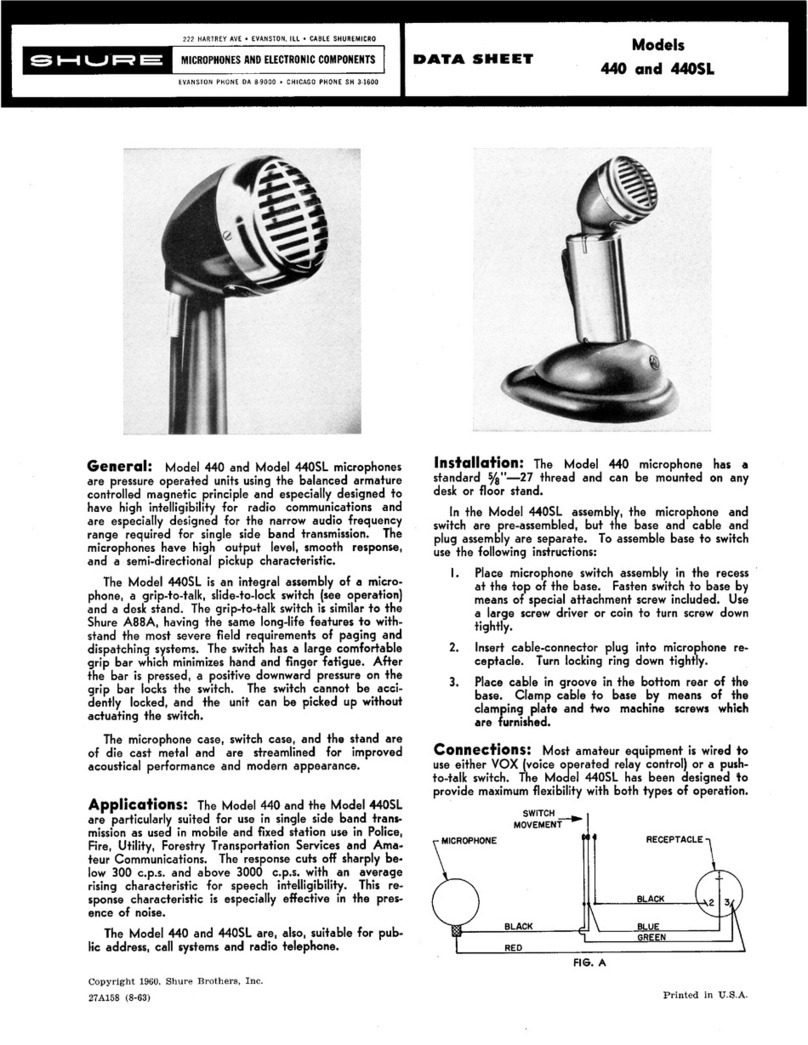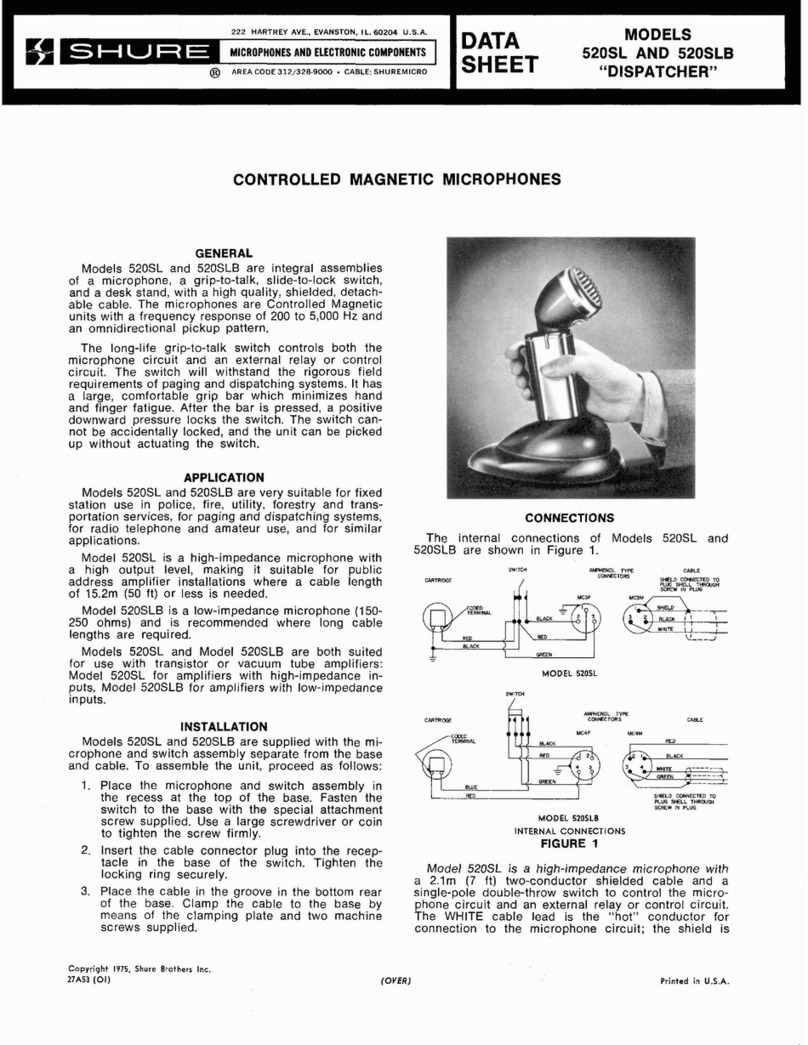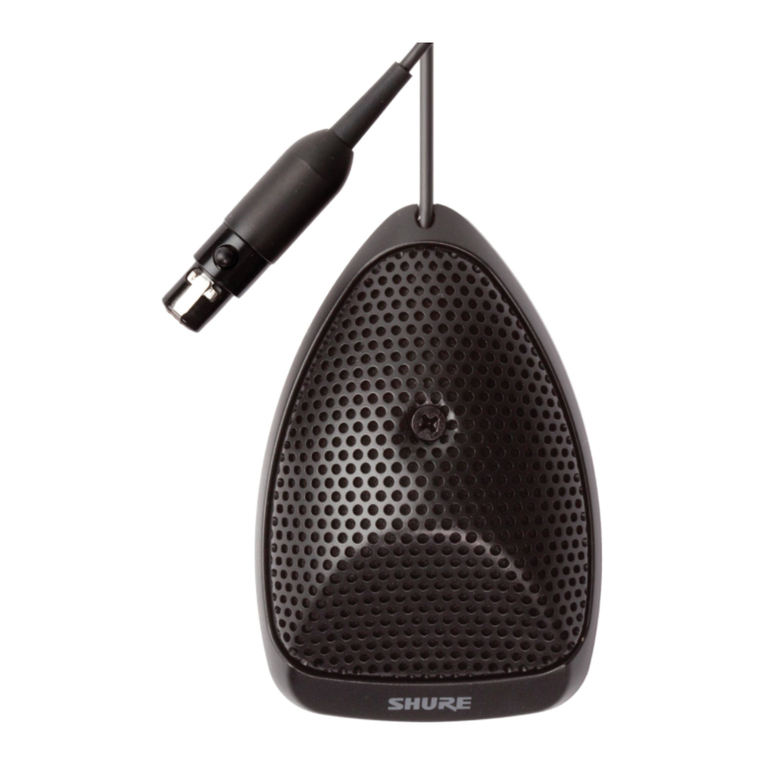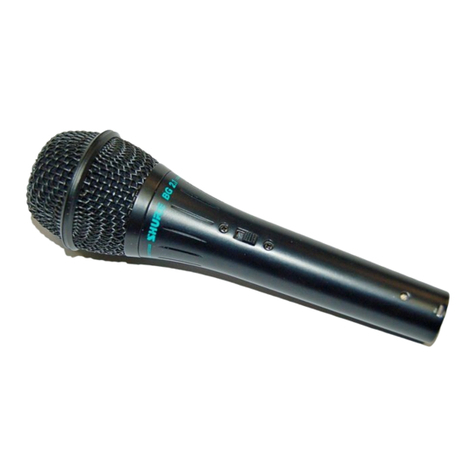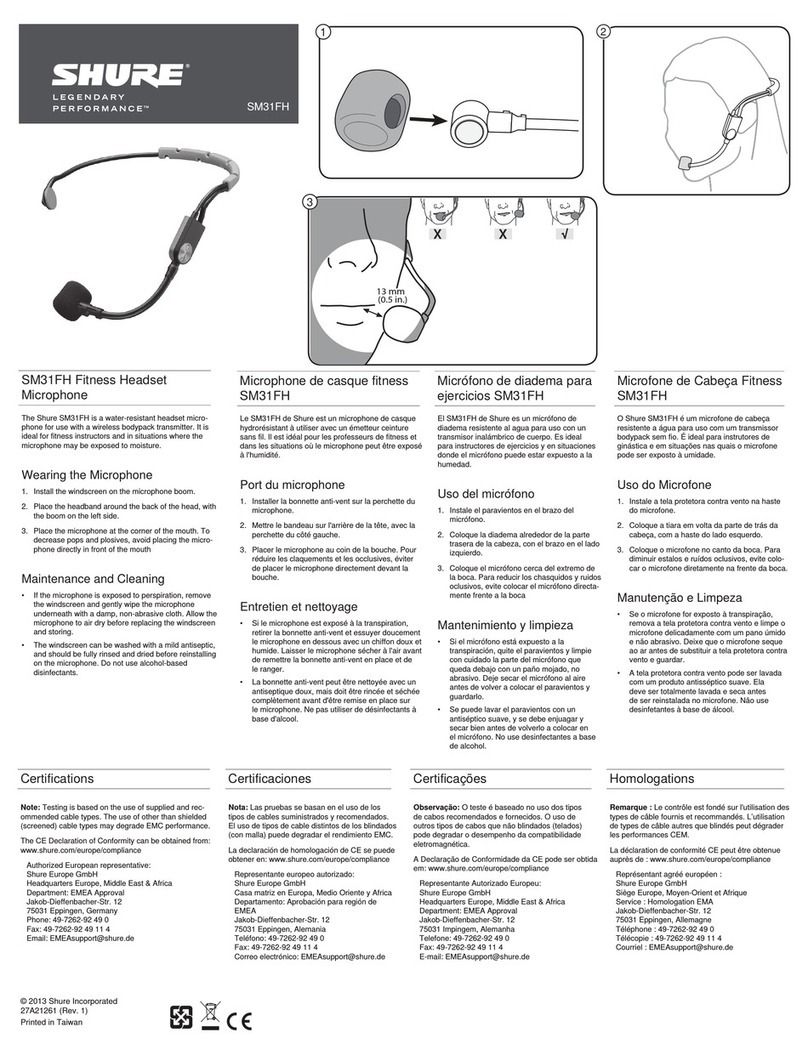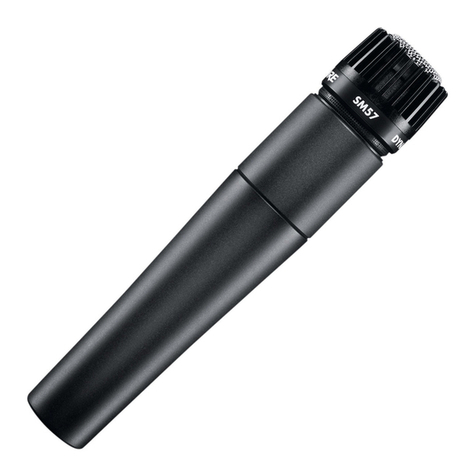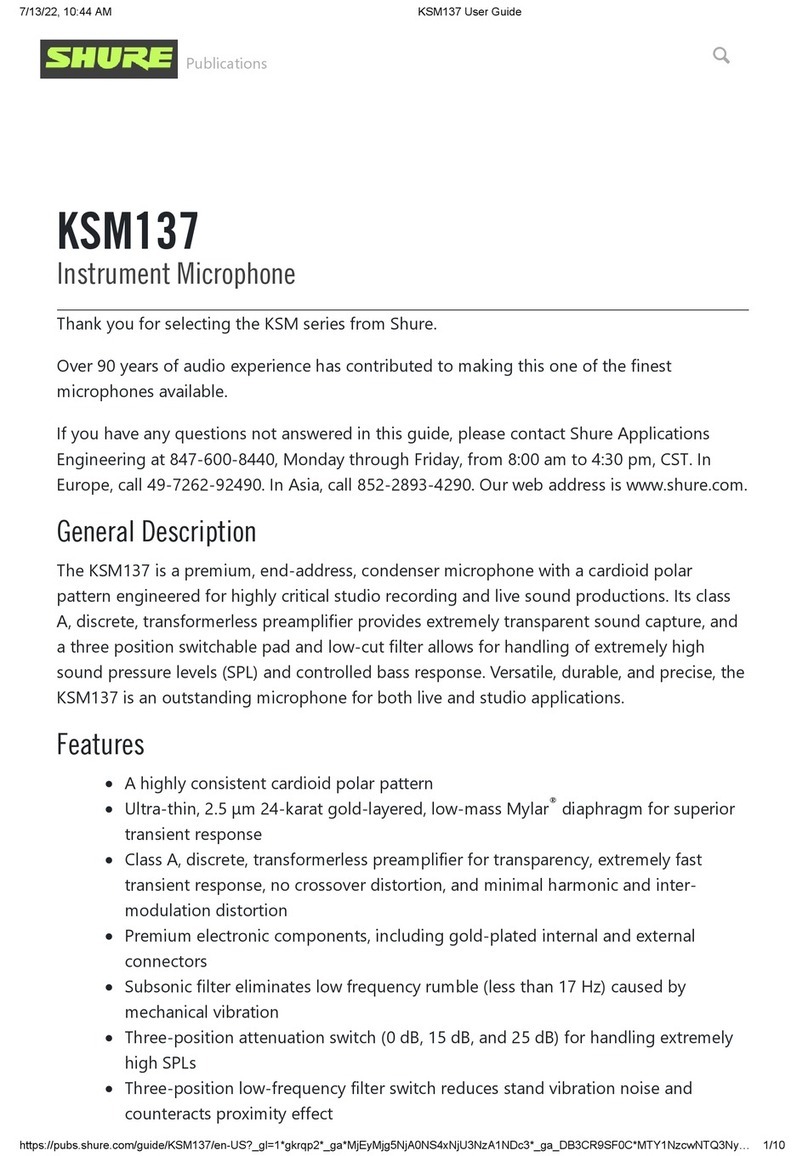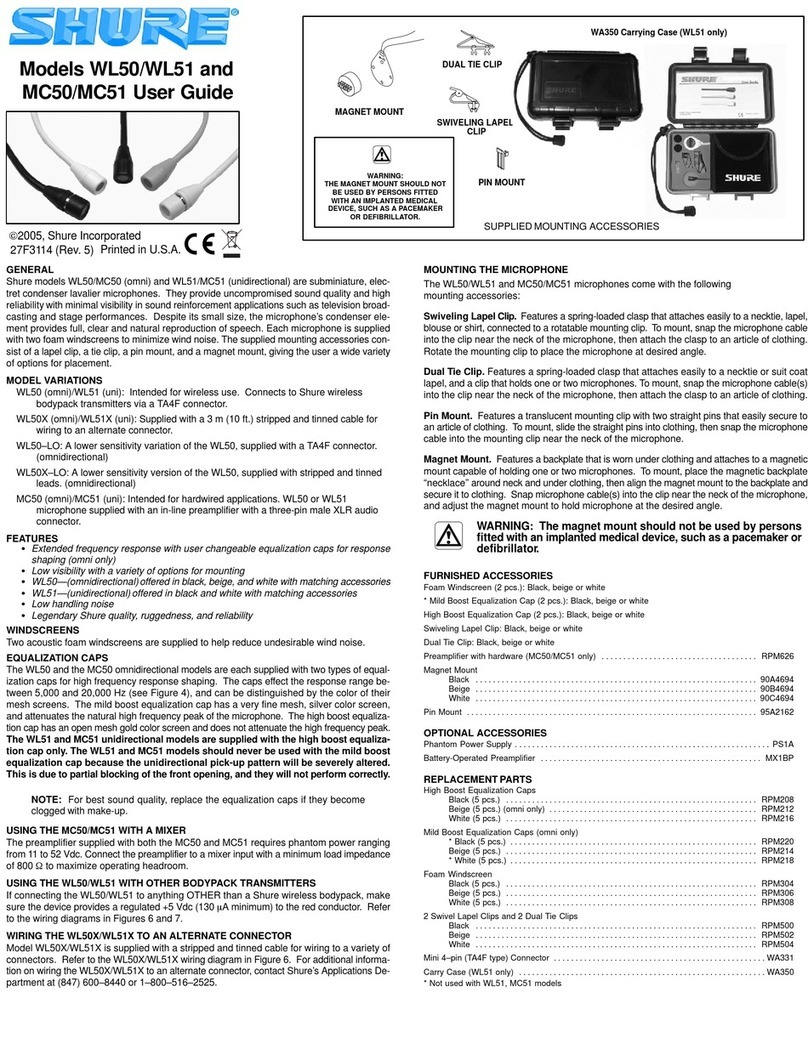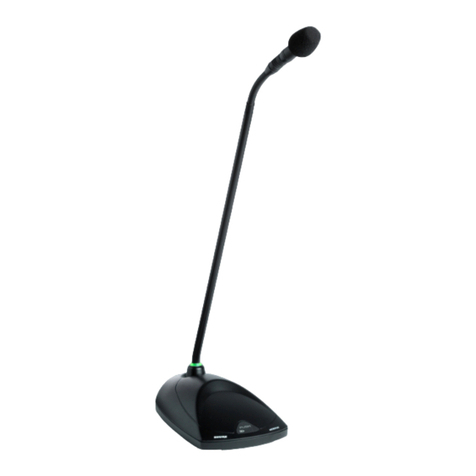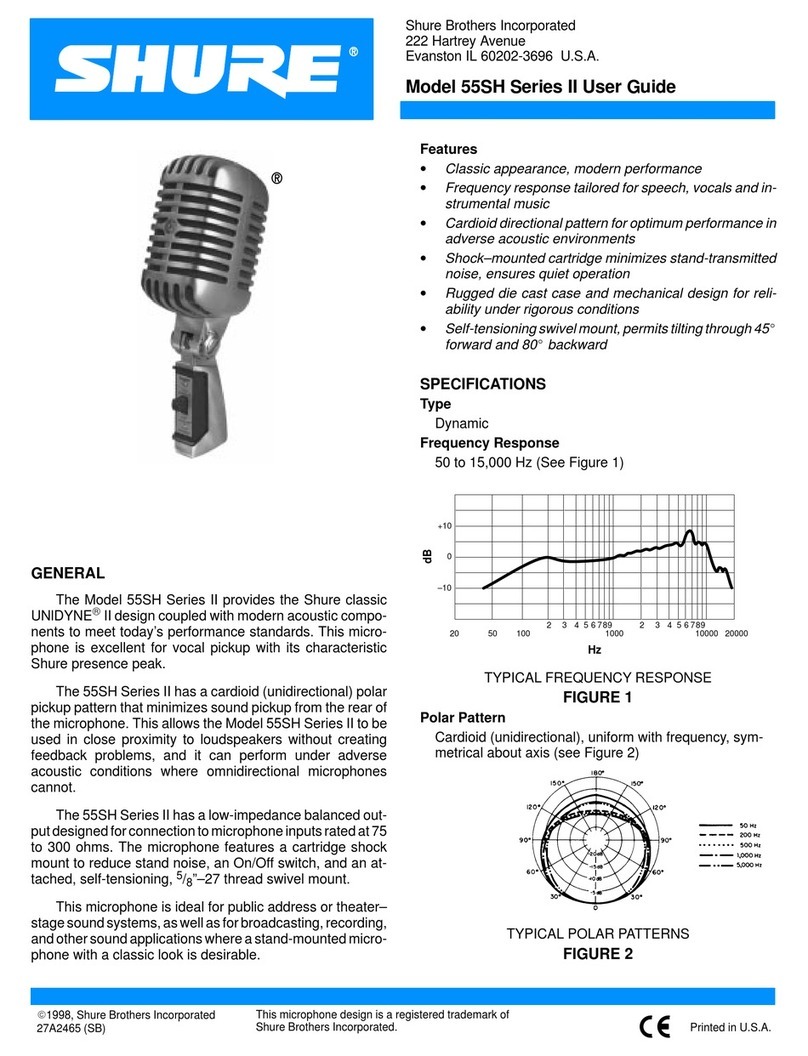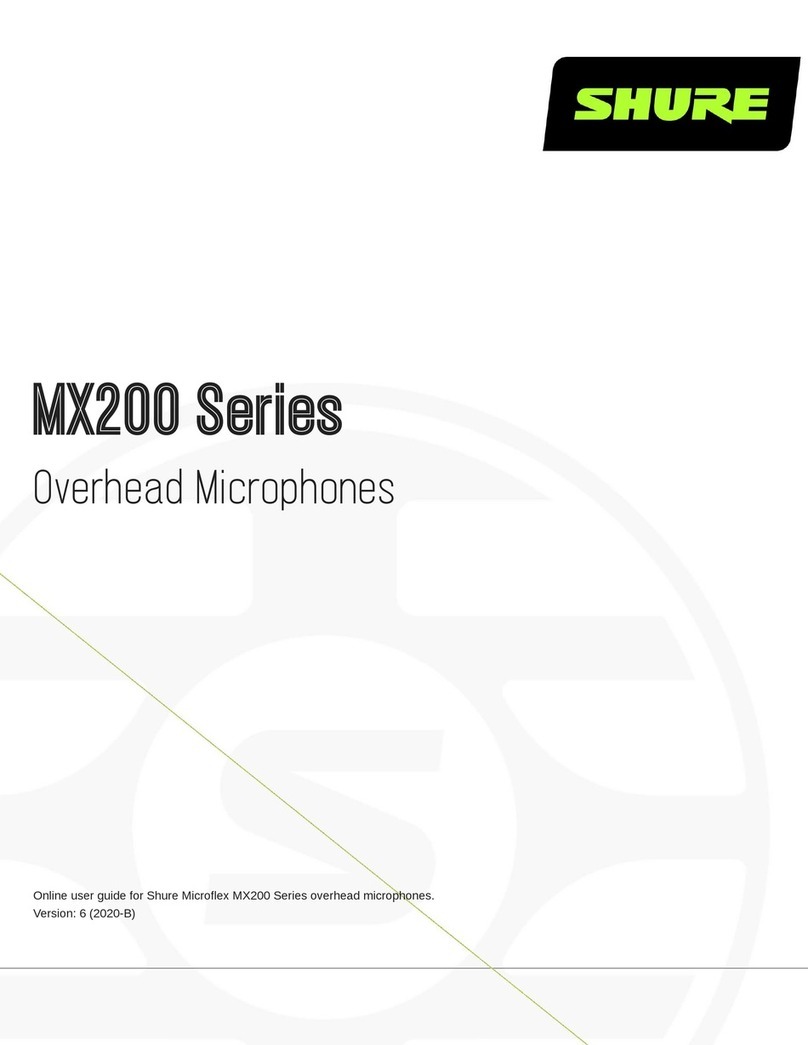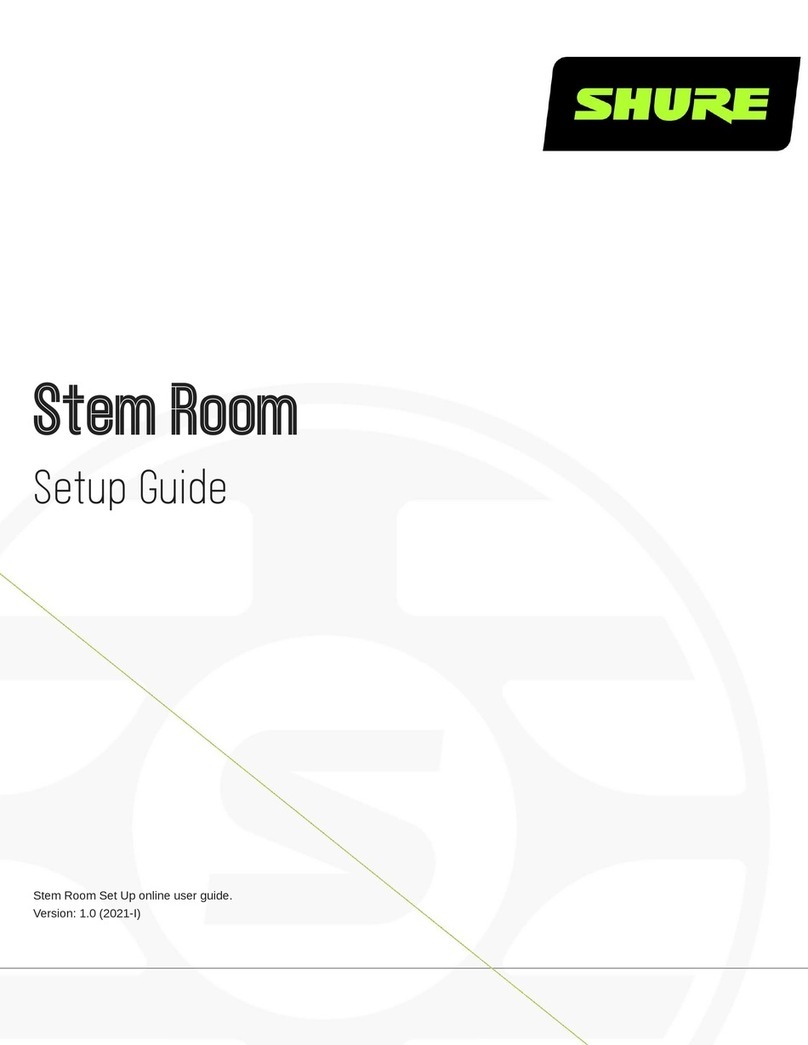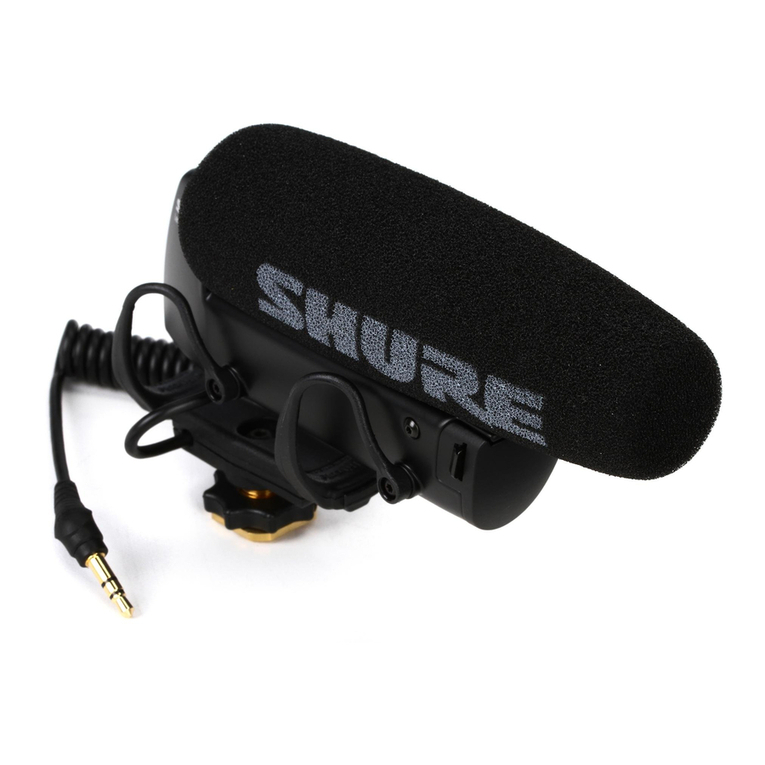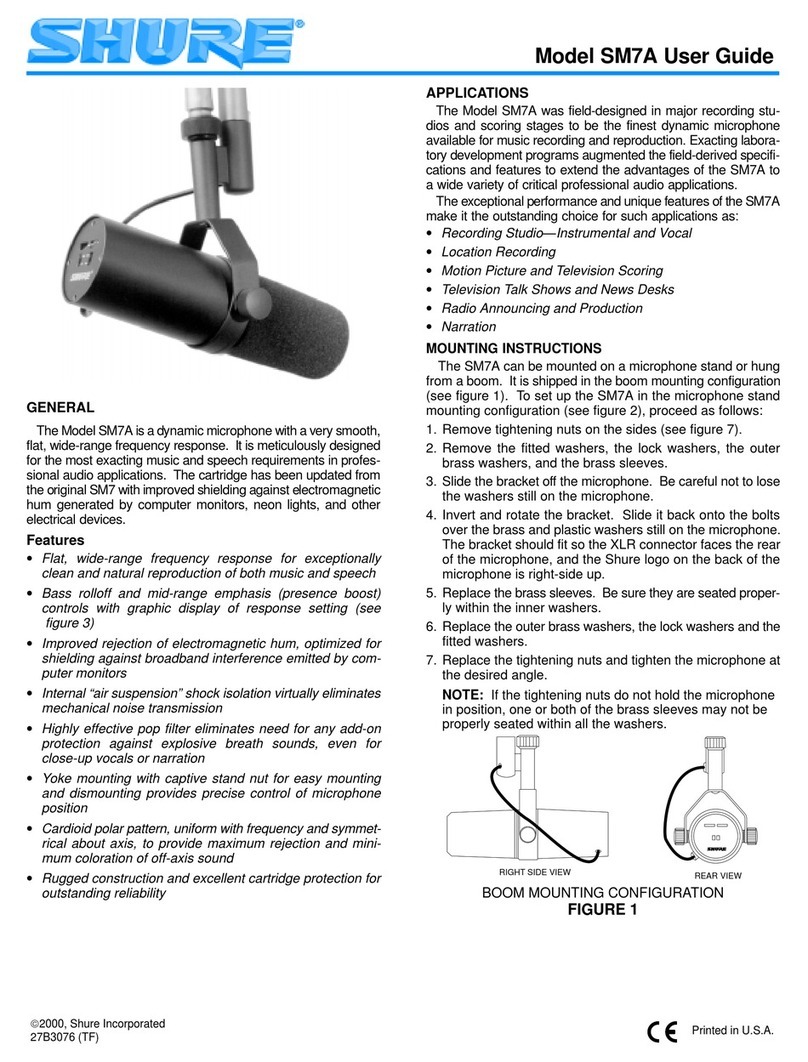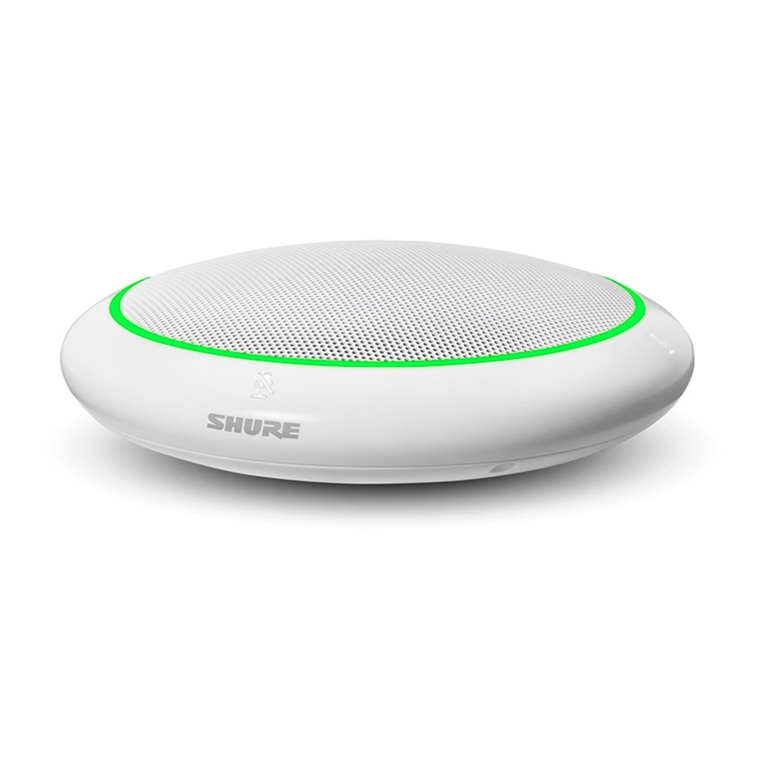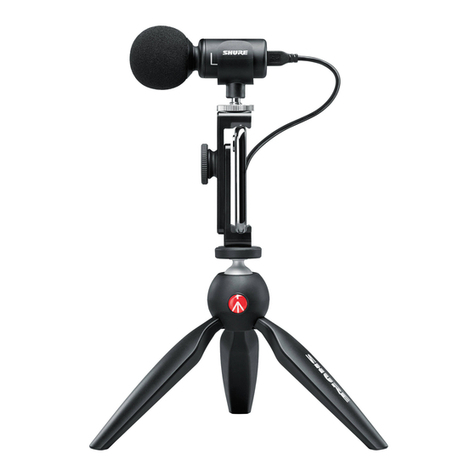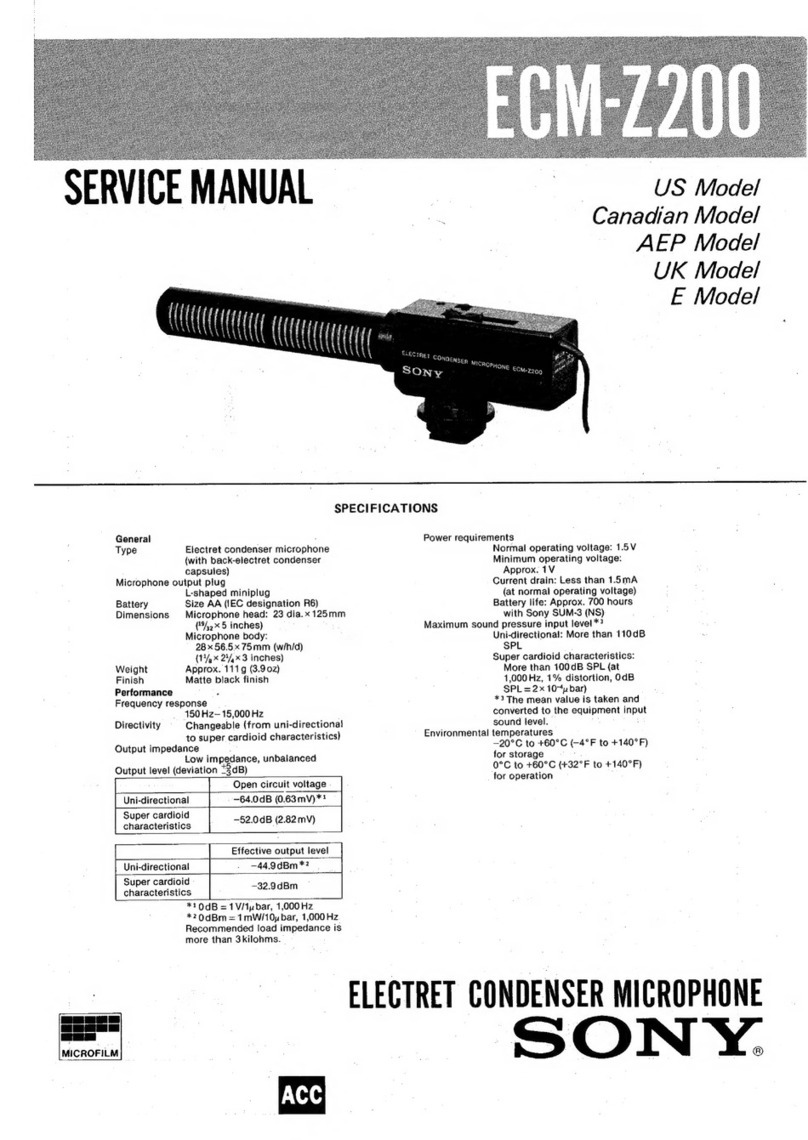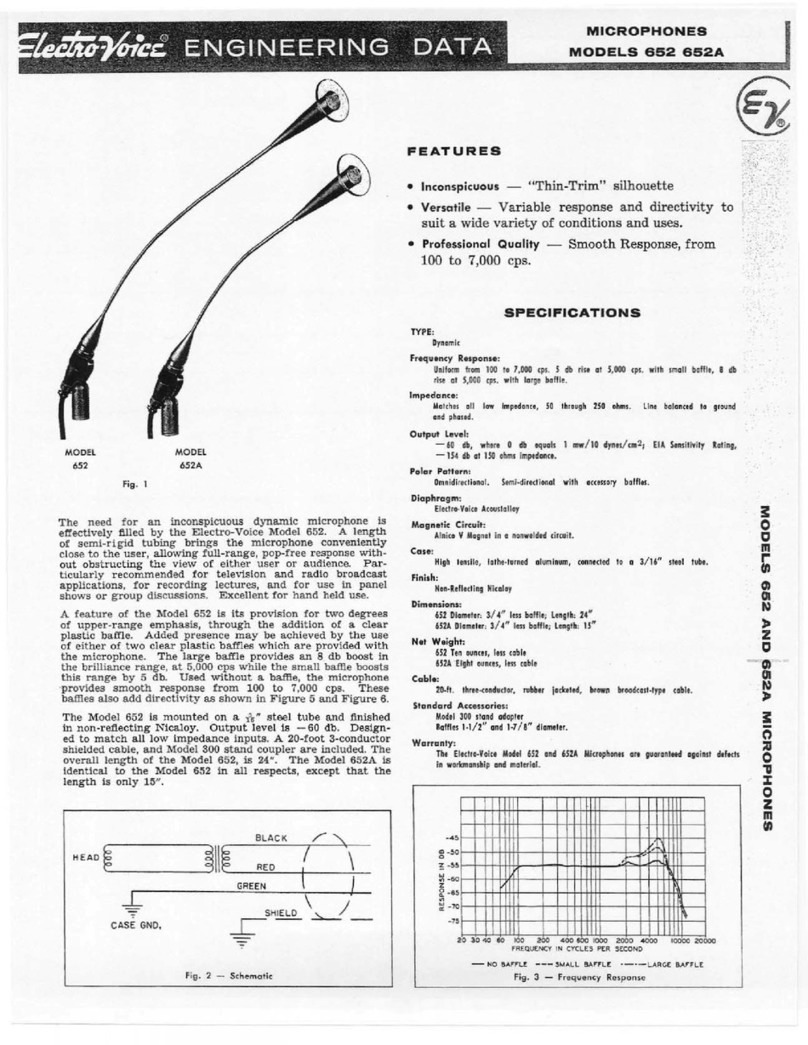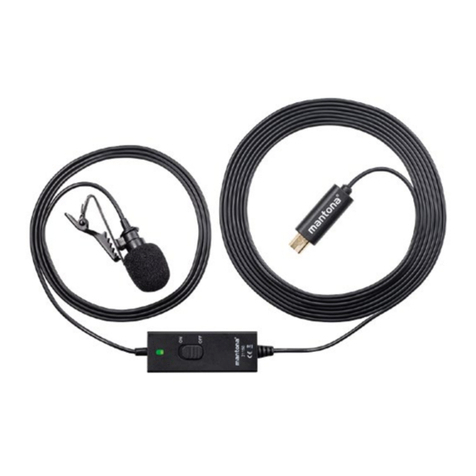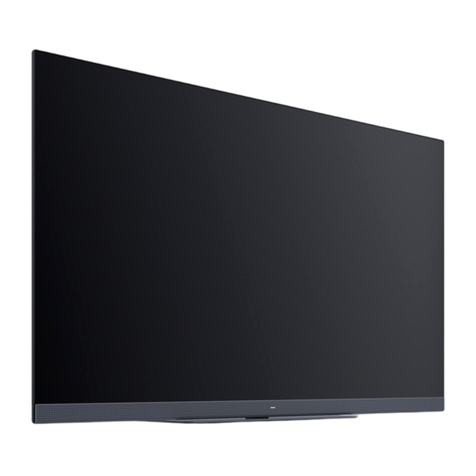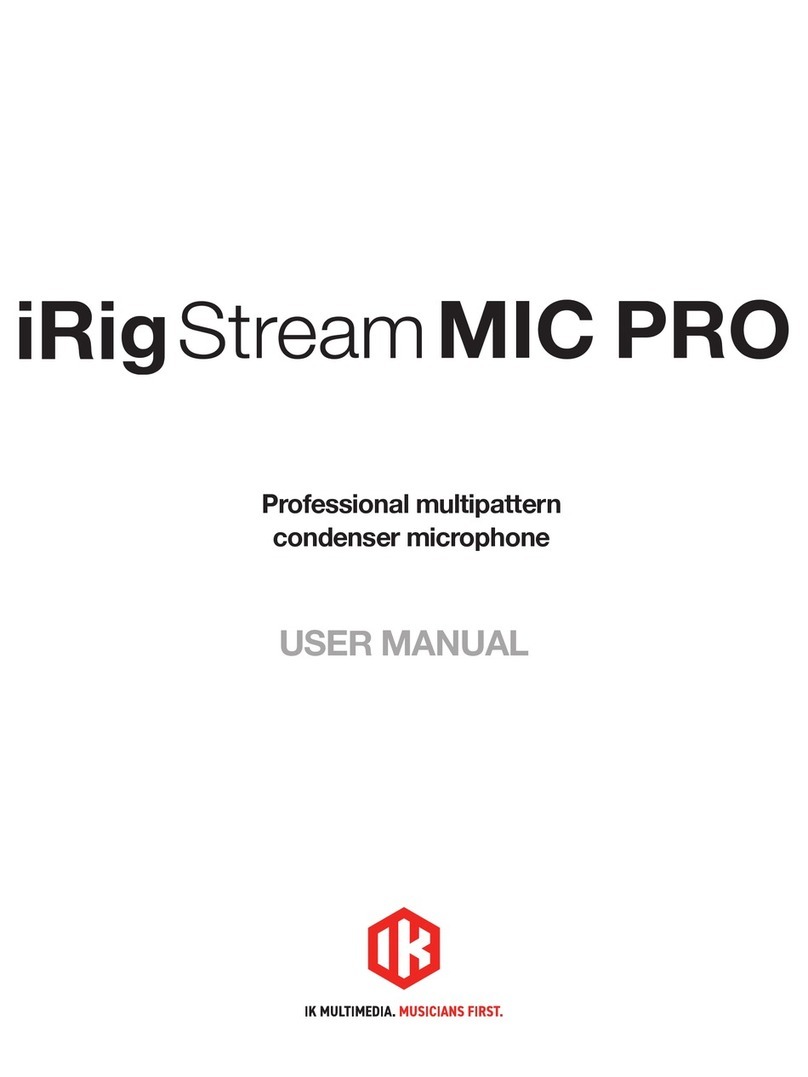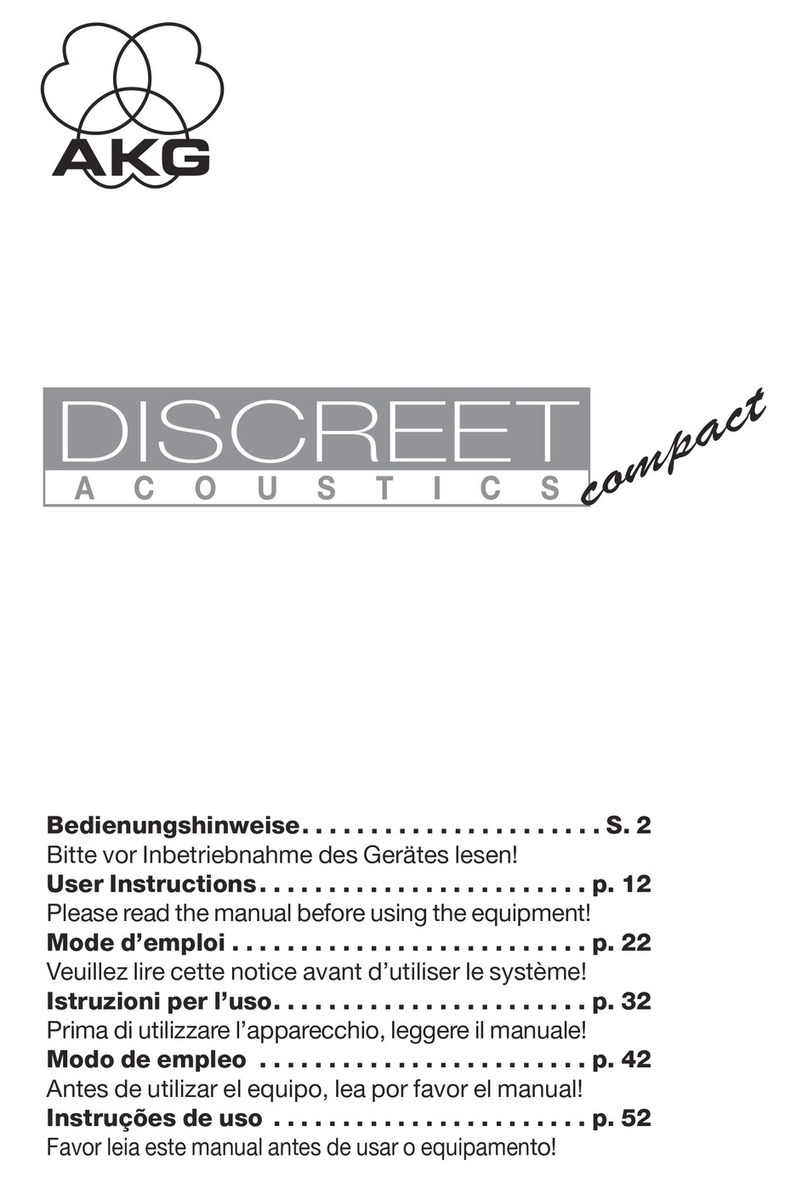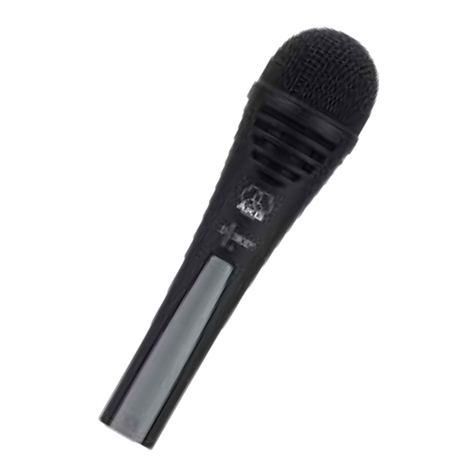
10
GUIDA D’USO DEI MICROFONI PENSILI MICROFLEX
SERIE MX200
DESCRIZIONE GENERALE
I microfoni Shure Microflexserie MX200 sono microfoni
tipo miniatura a condensatore con elettrete concepiti per
l’uso da parte di cori e gruppi artistici. In genere vanno so-
spesi sopra la testa degli artisti. L’elevata sensibilità e la va-
sta gamma di frequenze li rendono adatti sia agli impianti di
registrazione che a quelli di amplificazione sonora. Un collo
d’oca di 10 cm, collegato, permette di rivolgerli facilmente
verso la sorgente sonora.
CARATTERISTICHE
•
Gamma dinamica di elevato valore e risposta in fre-
quenza a larga banda, ai fini di una riproduzione precisa
del suono in tutto il campo di frequenze audio
•
Cartucce intercambiabili che consentono di effettuare
una scelta ottimale del diagramma polare di ricezione
per ogni applicazione
•
Uscita bilanciata, senza trasformatore, per ottenere una
maggiore immunità dal rumore in lunghi tratti di cavo
•
Adattatore per montaggio su supporto, in dotazione, per si-
stemi portatili (solo versioni con preamplificatore in linea)
•
Finitura bianca o nera che armonizza con la maggior
parte delle superfici circostanti
DESCRIZIONE DEI MODELLI
Tutti i microfoni Microflexsono dotati di una cartuccia a
scelta fra tre modelli intercambiabili. Il diagramma polare
della cartuccia è indicato dal suffisso del numero di modello:
C = Cardioide, S = Supercardioide, O= Omnidirezionale
•MX202B/C, S, O: microfono nero tipo miniatura a con-
densatore; include cavo, preamplificatore in linea e
adattatore per supporto
•MX202W/C, S, O: microfono bianco tipo miniatura a
condensatore; include cavo, preamplificatore in linea e
adattatore per supporto
•MX202BP/C, S, O: microfono nero tipo miniatura a con-
densatore; include cavo e preamplificatore montato su pia-
stra
•MX202WP/C, S, O: microfono bianco tipo miniatura a
condensatore; include cavo e preamplificatore montato
su piastra
Cardioide (C). Raccomandato per impianti di amplificazione
sonora di tipo generale. Angolo di ricezione (–3 dB) = 130.
Supercardioide (S). Raccomandato per impianti di am-
plificazione sonora che richiedono una direttività o portata
maggiore. Angolo di ricezione (–3 dB) = 115.
Omnidirezionale (O). Raccomandato per impianti di regi-
strazione o monitoraggio a distanza. Angolo di ricezione = 360.
LINEE GUIDA GENERALI DI INSTALLAZIONE
1. Per i cori, sospendere il microfono a una distanza oriz-
zontale compresa tra 60 cm e 1 m rispetto alla prima fila
e a una distanza verticale compresa tra 60 cm e 1 m ri-
spetto alla testa dei cantanti dell’ultima fila. Rivolgere il
microfono verso l’ultima fila (vedi Figura 1).
2. Quando si usa il microfono con gruppi che si spostano
o variano di numero, adoperare una giraffa e l’adattato-
re per supporto, in dotazione.
3. Se quattro o più microfoni saranno in funzione contem-
poraneamente, si raccomanda l’uso di un mixer auto-
matico, come il modello Shure SCM810o FP410. Rego-
lare il mixer automatico in modo che attivi
simultaneamente tutti i microfoni sospesi.
INSTALLAZIONE DEL PREAMPLIFICATORE
Installazione del preamplificatore in linea (FIGURA 2)
Utilizzare i due dispositivi di montaggio in dotazione per
assicurare il preamplificatore ad una parete o al soffitto. Ta-
gliare il cavo alla lunghezza adeguata e collegarlo mediante
i terminali ad avvitamento situati all’interno del preamplifica-
tore. I terminali sono contrassegnati con B (nero), R (rosso)
ed S (schermatura).
Collegamenti d’ingresso del preamplificatore a
montaggio su piastra
1. Staccare l’alloggiamento del preamplificatore svitando-
ne le due viti con testa a croce situate sul lato posteriore.
2. Togliere il materiale che si trova nel foro al centro della pia-
stra di copertura o dell’alloggiamento del preamplificatore.
3. Tagliare il cavo alla lunghezza adatta per l’altezza a cui
si desidera sospendere l’apparecchio, lasciando un av-
volgimento di 8-10 cm per eventuali interventi.
4. Applicare il pressacavo al cavo e infilarlo nel foro.
5. Collegare i conduttori del cavo alla morsettiera (B =nero,
R = rosso, S = schermatura).
GUIDA ALLA SELEZIONE DEL MICROFONO
Scopo Metodo di montaggio Tipo di
preamplificatore Colore Diagramma
polare Modello Lunghezza
del cavo
Amplificazione sonora
della voce di cori o
attori
Su supporto o sospeso dal
soffitto
Sospeso dal soffitto
In linea
In linea
In linea
In linea
Montato su piastra
Montato su piastra
Montato su piastra
Montato su piastra
Nero
Bianco
Nero
Bianco
Nero
Bianco
Nero
Bianco
Cardioide
Cardioide
Supercardioide
Supercardioide
Cardioide
Cardioide
Supercardioide
Supercardioide
MX202B/C
MX202W/C
MX202B/S
MX202W/S
MX202BP/C
MX202WP/C
MX202BP/S
MX202WP/S
9 m
Registrazione del
suono di ambienti;
monitoraggio a
distanza della voce di
cantanti e oratori
Su supporto o sospeso dal
soffitto
Sospeso dal soffitto
In linea
In linea
Montato su piastra
Montato su piastra
Nero
Bianco
Nero
Bianco
Omnidirezionale
Omnidirezionale
Omnidirezionale
Omnidirezionale
MX202B/O
MX202W/O
MX202BP/O
MX202WP/O
9 m
